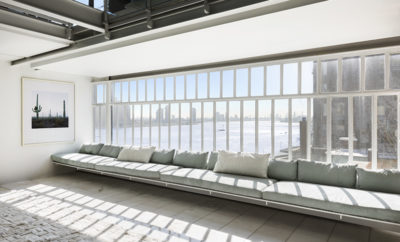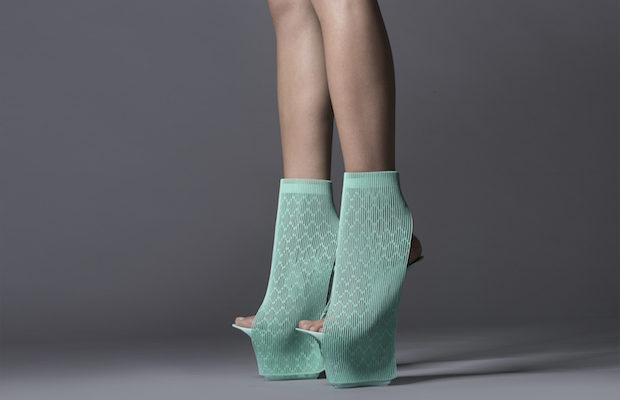 Courtesy United Nude
Courtesy United Nude
Design
The Renaissance Man of the Future: Ross Lovegrove at the Pompidou Center
From the Hubble telescope to the CERN particle accelerator, physicists and cosmologists are searching high and low for a grand unifying “theory of everything” to explain the world in which we live. Welsh industrial designer Ross Lovegrove is engaged in a similar search, but with a more tangible objective—to create new, holistic ways of living in it. Convergence, running from April 12 to July 3, at the Pompidou Center in Paris, is an audit of his quest over a roughly thirty-year period to harness science to a vision of the well-designed life. The title of the show references his guiding principle that design should bring together science and art, nature and technology. Lovegrove makes biology, anthropology, physics, and ecology central to his practice. Ranging from everyday objects to cars, aviation and architecture, he has developed his own concept of "DNA" in design, which stands for Design, Nature, Art.
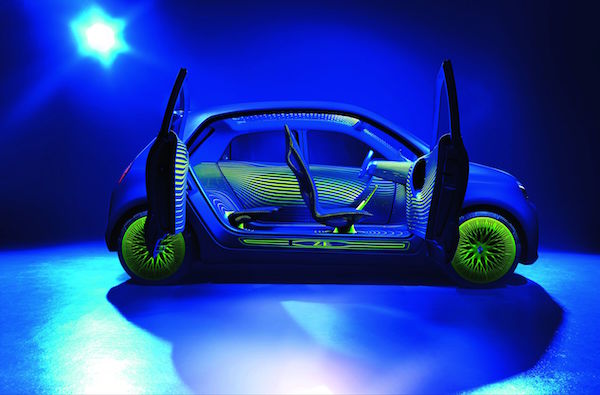
Concept-car Renault Twin Z by Ross Lovegrove, 2012-2013. Courtesy Renault.
"The idea of convergence intimates a time where the merging of all things takes the form of a profound change in the way we see and make the physical world around us," Lovegrove says. "Because design involves transforming natural resources into useful objects, the designer is at the very heart of today's technological issues, which affect not only our own emotional and aesthetic state but also our collective awareness as human beings—a species that is ever rapidly evolving and needs to adapt continuously."
Set in a large open space of more than 8600-square-feet, the show brings together some eighty-five objects and two dozen drawings: shoes, bottles, chairs, a bamboo bicycle, an ecological house, a solar-powered car. Biomimicry, digital technology, and materials science are key vectors of his creative process.
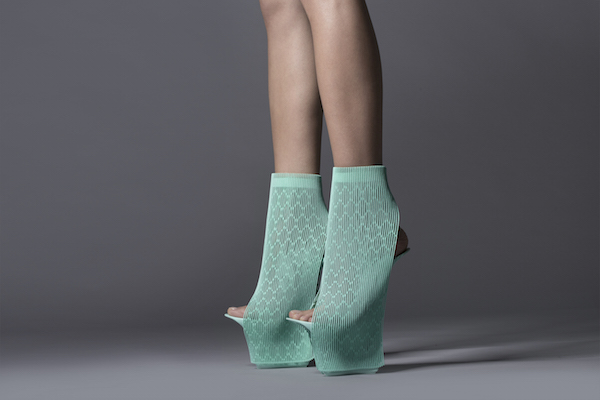
Ilabo Shoes by Lovegrove, 2015. Courtesy United Nude.
The show’s curator, Marie-Ange Brayer calls it a “forward-looking retrospective,” a formula that catches the timelessness of objects that are physically present, futuristic in spirit yet rooted in an evolutionary past. 3-D laser sinter-printing technology is used to create funky nylon-mesh platform bootees for Dutch shoe brand United Nude. Advanced composite materials are pressed into service in the lightweight three-lobed “Gingko” table, fashioned from interacting leaves of carbon fiber. Algorithmic calculations yield the fluid, organic forms of Cosmic Angel, Cosmic Leaf and Cosmic Landscape—metal and polymer lamp sculptures designed for Italian lighting firm Artemide.
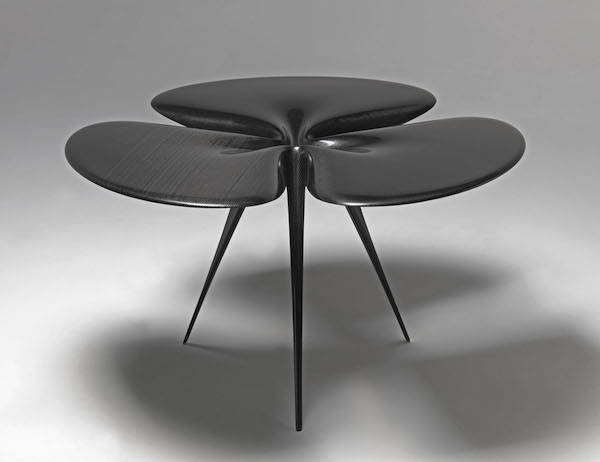
Gingko Carbon Table by Lovegrove, 2007-2008. Courtesy Lovegrove Research.
Collaborations with the Austrian crystal firm Swarovski and Barrisol, the French maker of stretched fabric ceilings, have generated some of Lovegrove's most strikingly futuristic work. Resembling a cross between a flying saucer and a stealth airplane, the Swarovski Crystal Aerospace is a prototype model for a solar concept car, powered by a coating of a thousand cut crystals, feeding captured light into an underlying layer of polycristaline photovoltaic cells. Another piece, the Barrisol Cocoon, is built like a lunar landing module with a metalic mylar skin stretched over an aluminum skeletal frame. Suspended in mid room, it looks like a cruciform redesign of the Starship Enterprise, but is actually an exhibition space within an exhibition space, housing an anamorphic ovoid that serves as a 3-D video screen.
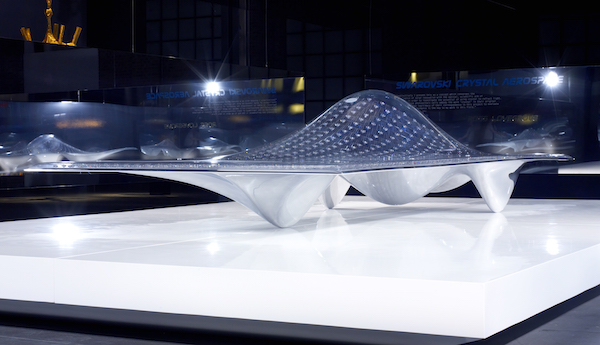
Swarovski Crystal Aerospace by Lovegrove, 2005-2006. Courtesy Swarovski; photo by John Ross.
Drawing inspiration from Henry Moore and Francis Crick and working alongside the likes of Philippe Starck and Jean Nouvel—for clients ranging from Airbus to Apple to Issey Miyake—Lovegrove proves himself a post-post-modern reincarnation of a multicultural, multidisciplinary Renaissance man in this comprehensive exhibition at the Pompidou.
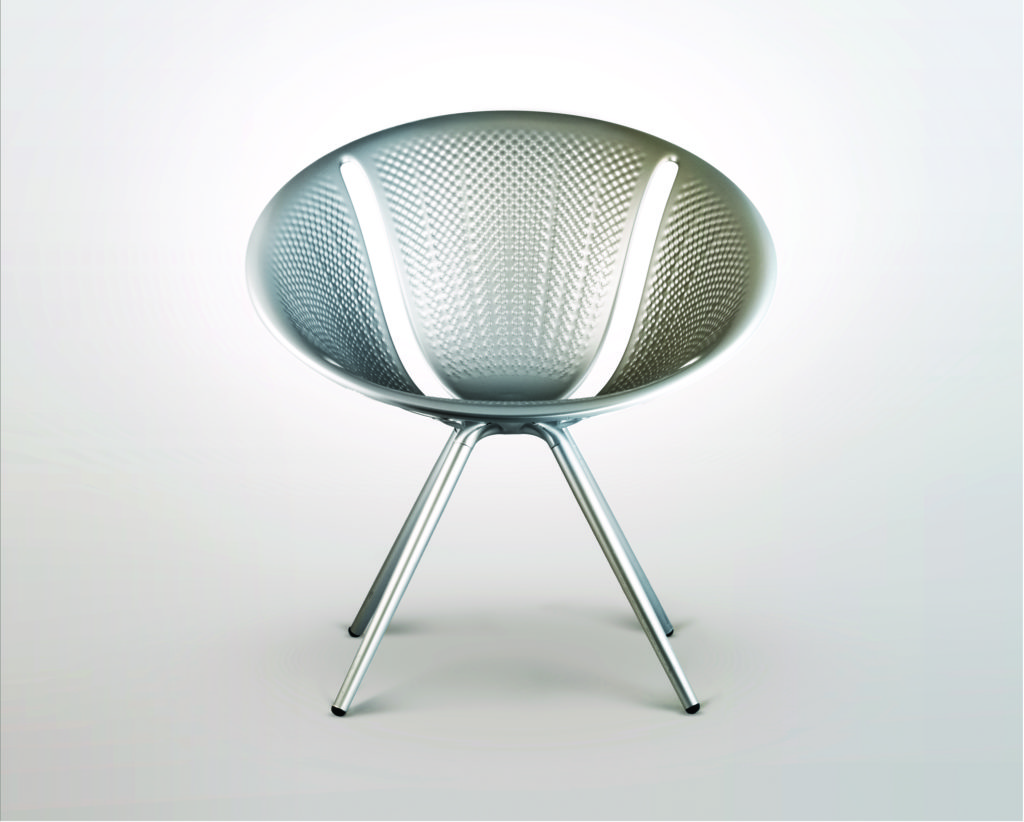
Diatom by Lovegrove, 2014. Courtesy Moroso; photo by Moroso.




